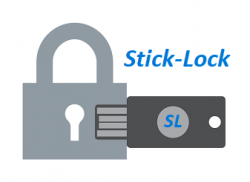Friday, September 11, 2020
As everybody knows “Make Backups (more than one!!) of your data!!” nowadays is as important as gaining enough sleep or eating healthy. But sometimes you are completely unprepared. This is exactly what happened to me a few days ago. A hard disk with very important source code for a project I’m currently working on suddenly stops working and the last backup was … some weeks ago.
So what to do? Besides calling me self a jackass I had to find a way to get back the data. After researching prices of some professional data rescue companies I came to the conclusion that trying to recover the data myself (and rewriting the lost source code in case my rescue attempt fails) would be cheaper and faster (project deadline is approaching with rapid steps).
[Read more…]
Thursday, September 10, 2020
PyAgentX3 is a pure Python3 implementation of the AgentX protocol (RFC 2741).
It will allow to extend an SNMP agent (e.g Net-SNMP snmpd) by writing AgentX subagents without modifying the original SNMP agent.
RFC 2741: Agent Extensibility (AgentX) Protocol
Code and samples can be found on github.
It features:
- Open a session with AgentX master, e.g. net-snmpd snmpd, and register a new session.
- Send Ping request.
- Register multiple MIB regions.
- Multiple MIB update classes with custom frequency for each.
- Support snmpset operations.
- Reconnect/Retry to master, in case the master restarted.
- Support for SNMPv2 traps.
The prototype of my simple FPGA based SoC with multiple Ethernet interfaces worked so well that I decided to create a PCB for it and increase the number of network interfaces from two to four. It also includes a special PMOD connector for a SD-Card to boot a firmware or Linux from. Also two of the Arty’s four existing PMODs are also still available for extensions. PMOD-C and PMOD-D are no longer available as their pins are used for some of the Ethernet PHY modules.
Due to I/O limitations the Seven Segment Display was removed from the original design.
[Read more…]
In my day to day business I work with Software Defined Networking (SDN) a lot. Especially with Open-Flow, Open-vSwitch and some commercial products.
Most of the time the projects are not “normal” ones where these techniques are used in larger scenarios like enterprise or data-center networks. Instead I use them on the other side of the scale in embedded environments for example to develop Space based satellite routers.
At the time of this writing we now have almost eight weeks lock-down due to the SARS-CoV-2 pandemic. This means no travel time to my office and instead working from home. So this spare time must be filled with some experiments. Unfortunately at home I don’t have the resources I normally have at my workplace. So no fancy, multi k-euro development boards and tools. Wanting an embedded system with at least two Ethernet interfaces I looked around in my electronic junkyard and found some interesting components which might give a not so bad platform for some networking experiments. Especially low level Ethernet packet handling (filtering, modifying) is on of my interests. Maybe playing with P4, NetCope, or P4FPGA without spending a fortune.
[Read more…]
Using a YubiKey (or other USB security token) to unlock physical things.
While researching locks and lockable storage for a new premise I found lots of LockPicking information about how to hack and break into products from even renowned companies. It’s not only a waste of money buying “high security” products which could be unlocked by just a paper clip like shown in this Video but might also be dangerous.
At the same time I use my YubiKey daily with IT systems and services. So I thought to myself:
“Why not use a YubiKey as a key for physical storage/property?”.
So I started another research, if, how and with how much effort a lock for physical things could be designed which uses a standard USB security token as key.
Fortunately it was easy to design such a lock. The outcome is the “StickLock” (short “SL”) described in this project.
Note: Latest software could be found on GitHub.
[Read more…]



